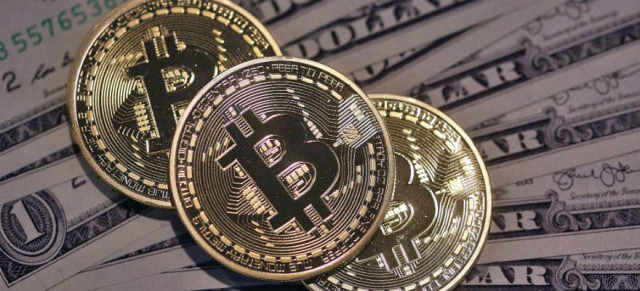Decrypting the bull-run in cryptocurrency
Bitcoin has tripled its value to $40,000 in a span of just a few months

There has been a gold rush in cryptocurrency lately, which caught the attention of many global investors who were running from pillar to post in search of safe-haven to hedge against the dollar inflation risk.
On the flip side, there are many who always think that there is a huge bubble in cryptocurrency.
The staunchest critic of cryptocurrency and renowned economist Nouriel Roubini, who correctly predicted the housing bubble of 2008, has long argued that cryptocurrency has no intrinsic value and hence cannot be used as storage of wealth.
Legendary investor Warren Buffett went even further and has called bitcoin a “probably rat poison squared” which might not be around in the next few decades. Despite all the criticism against cryptocurrency, both Roubini and Buffett believe that the blockchain technology behind crypto may have some real value.
So far the only utilisation of cryptocurrency was found in the darker side of economy to carry out unscrupulous transactions on the dark web or similar shady deals made by criminals, gamblers and drug dealers.
However, the recent announcement by PayPal to allow its nearly 350 million users to use cryptocurrency on its platform has caught attention of some of the most sophisticated investors who have somehow managed to stay clear of it so far.
Prominent business software company MicroStrategy Inc announced in August last year that it had converted $250 million of its cash-holding into bitcoin. Since then, many publicly traded companies as well as exchange-traded funds (ETFs) and trusts have dabbled into the mystic world of cryptocurrencies.
To explain the method behind the madness in the recent meteoric rise in bitcoin, the Stock-to-Flow (STF) model is presented once again, which claims to provide a yardstick to measure the real value of bitcoin at any given point in time.
Apparently, the model claims that bitcoin can be compared to any commodity eg gold, which is valuable both because new supply through gold mining is insignificant to the current supply and also it is impossible to replace the existing gold reserves around the world.
It draws parallel to bitcoin, which becomes more valuable as new supply is reduced every four years in a process known as “halving”, ultimately culminating in supply of 21 million bitcoins.
However, the co-relation between the price and scarcity of any resource cannot be ascertained for long term and this is where this model loses its ground.Opponents of cryptocurrency do not believe that it is actually even a currency and hence it cannot replace digital currency or payment platforms such as Paypal, Alipay, etc.
They, in fact, believe in simply creating a digital equivalence of the existing paper currency to ensure ease of transactions as the recent Covid-19 pandemic has acted as a catalyst to promote contactless and paperless transactions.
The most important characteristic sought by global central banks for any currency to be used as a reserve currency is to provide a stable and trusted medium of exchange, which cannot be promised by any cryptocurrency.
Another bottleneck lies in the fact that blockchain is inherently sluggish, for instance, bitcoin can carry out 4.6 transactions per second as compared to an average of 1,700 transactions by its closest rival VISA.
Since bitcoin has broken the historic high of $14,000, it has been trading in uncharted territory, where it has tripled its value to $40,000 in a span of just a few months. This gives some investors a deja vu feeling about a similar boom-and-bust cycle in 2017 when bitcoin rose to $20,000 before plunging into the abyss, hitting $3,000.
However, the speculators are confident that this time the situation could be different because institutional investors are involved. Even JPMorgan has given a price target of $146K despite the fact its CEO Jamie Dimon once called cryptocurrency a fraud that reminds him about the Tulip bulb mania of 17th Century.
No matter how different or genuine the party looks every time, every mania has to end and there are always a few who emerge as winners at the cost of others.
The writer is a financial market enthusiast and attached to Pakistan’s stocks, commodities and emerging technology
Published in The Express Tribune, January 11th, 2021.
Like Business on Facebook, follow @TribuneBiz on Twitter to stay informed and join in the conversation.



















COMMENTS
Comments are moderated and generally will be posted if they are on-topic and not abusive.
For more information, please see our Comments FAQ